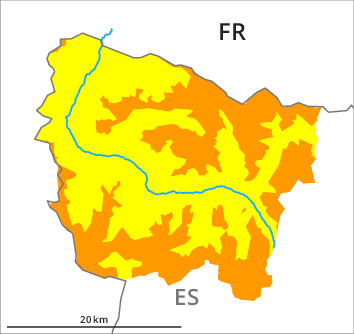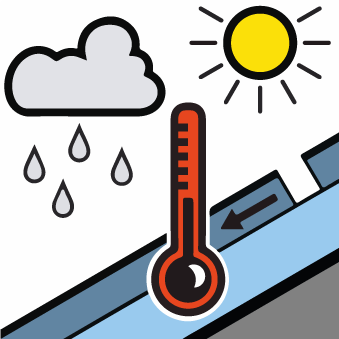
Danger level

2200m
Avalanche Problem

Wind-drifted snow

2200m


Wet snow

1500m


At elevated altitudes a considerable danger will persist. Wind slabs represent the main danger. Moist snow slides and avalanches as the day progresses.
The large surface-area wind slabs of the last few days can be released easily. or in isolated cases naturally, in all aspects above approximately 2200 m. The avalanche prone locations are to be found in particular on wind-protected shady slopes and on wind-loaded slopes. These can in many places be released by small loads and reach medium size. In addition further wind slabs will form in particular adjacent to ridgelines and in gullies and bowls in all aspects and generally at elevated altitudes by midday. As a consequence of warming during the day and solar radiation moist snow slides and avalanches are to be expected as the day progresses, but they can reach medium size in isolated cases.
Backcountry touring and other off-piste activities call for experience in the assessment of avalanche danger and careful route selection. Fresh and somewhat older wind slabs are to be bypassed whenever possible.
Backcountry touring and other off-piste activities call for experience in the assessment of avalanche danger and careful route selection. Fresh and somewhat older wind slabs are to be bypassed whenever possible.
Snowpack
>Over a wide area 30 to 40 cm of snow, and even more in some localities, has fallen since Friday above approximately 2000 m. In some localities up to 5 cm of snow will fall in the next few hours. The northerly wind has transported the new snow significantly. The fresh snow and in particular all the wind slabs are poorly bonded with the old snowpack in some places. They remain for the foreseeable future prone to triggering in particular on wind-protected shady slopes. Released avalanches and stability tests show a precarious avalanche situation.
At intermediate and high altitudes snow depths vary greatly, depending on the infuence of the wind. At low altitude from a snow sport perspective, in most cases insufficient snow is lying.
At intermediate and high altitudes snow depths vary greatly, depending on the infuence of the wind. At low altitude from a snow sport perspective, in most cases insufficient snow is lying.
Tendency
Significant increase in danger of moist avalanches as a consequence of warming during the day and solar radiation. The danger of dry avalanches will decrease gradually.